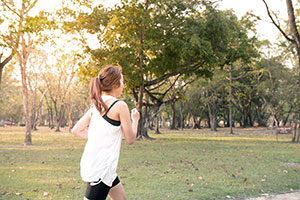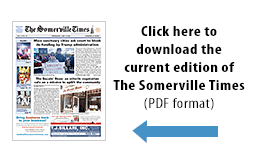
The Urban Forestry Committee is looking out for the welfare of both residents and trees in the city.
By Elizabeth Long
On July 16, the Somerville Urban Forestry Committee met virtually to discuss residents’ concerns, city updates, and other various topics. “The Urban Forestry Committee is a great group of knowledgeable and dedicated people who are working really hard to support the city’s Urban Forestry program,” said Vanessa Boukili, Senior Urban Forestry Landscape member. “In addition to advising on many projects in the city and working on educational campaigns, they recently initiated the city’s first Adopt-A-Tree program which has been a huge success in getting residents to help care for the city’s newest street trees.”
The group recently forged a new mission statement that states “The Urban Forestry Committee provides public guidance, support, and community outreach in order to protect, nurture, and grow the city’s urban forest. We are a dedicated group of local activists, landscape professionals, and community partners who work together to advise on best practices for planting, outreach, and arboreal care for the benefit of the urban forest, its inhabitants, and the residents of Somerville.”
Many of the recent resident concerns were focused on a large silver maple that was removed from Wallace St., flagged for its wood conditions and root zone, making it a safety concern for the community. The committee plans to prioritize replanting in the fall in a nearby spot. A resident commended Boukili for her well-rounded explanation and said, “As residents, we value the opportunity to have trees grow tall.” The committee also wanted to issue a warning about five trees that are pending removal along the Somerville Community Path.
Trees are very valuable, which is a good thing to keep in mind when it comes to removal because of their importance to the ecosystem. In recent years, the city has been taking more preventative measures to help these older trees stay healthy and live longer. In regard to spring planting, there are still at least 20 more trees getting replanted. Most tree replacements of the last few seasons have been replanted.
Beech Leaf Disease, or BLD, is another problem discussed by the committee. The first symptom is green striping on the leaves, so keep an eye out and contact the committee if noticed. BLD makes trees more susceptible to pests and kills younger trees, although not much is known about the disease, it has currently been noticed in Plymouth.
When it comes to reporting dead trees, the committee discussed the response times. When a resident calls 311, the response should be within 30 days, unless it is emphasized that the tree is a danger to the community. Smaller dead trees are taken care of much slower than the larger ones because they have to differentiate immediate hazards compared to potential threats in the future.
A major concern of the Committee is invasive plants that are protected by the city, even though they are disrupting the ecosystem. The counterargument was that the community does not want to take down big trees and replace them, but it is a major concern affecting the environment. Ecological landscaper, Tori Antoninio wants to clarify in the ordinance that “any invasive species, no matter size, will never fall under the tree protection ordinance.” She plans to start looking at how the city can avoid this and restore the ecosystem, saying that “it is irresponsible to put any protections on invasive species.”
Sidewalks were next up on the agenda and ensuring that there is space accessibility with the addition of new trees along them. If a tree along a sidewalk is grandfathered in, then they will not be replaced to ensure ADA accessibility, but younger trees are removed if they do not comply with accessibility standards. At least one side of the street needs to be ADA accessible, and if a tree dies, then its replacement is required to comply with these standards as well. In regards to spacing, in order to plant a tree, the sidewalk needs to be at least 36 inches in width, but the committee tries to increase sidewalk space as much as possible beyond that requirement.
Engaging the community and getting them involved increases the likelihood of adding trees and other plant life to the environment. Programs such as Adopt-A-Tree and Arbor Day 2020 speak to the community engagement with the streetscape. It shows the residents’ investment in improving the ecosystem of Somerville. The Urban Forestry Committee meets every three weeks to discuss their plans and address resident concerns. More information is available on the City of Somerville website.















Reader Comments